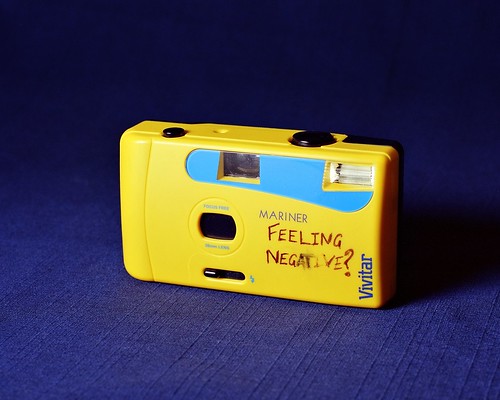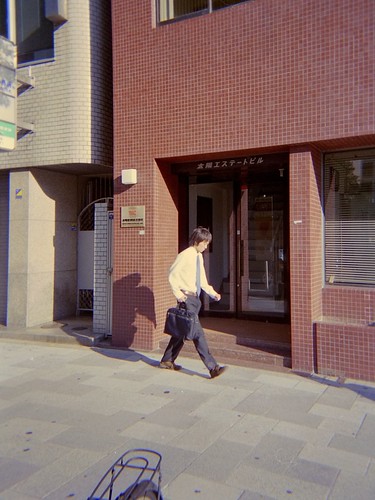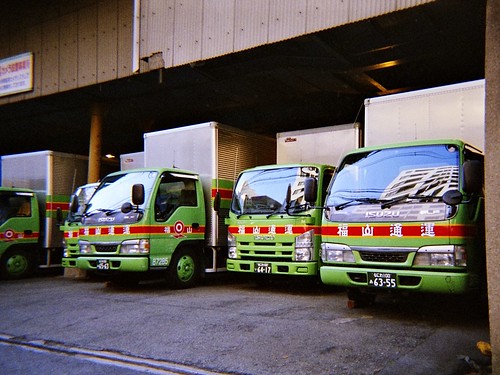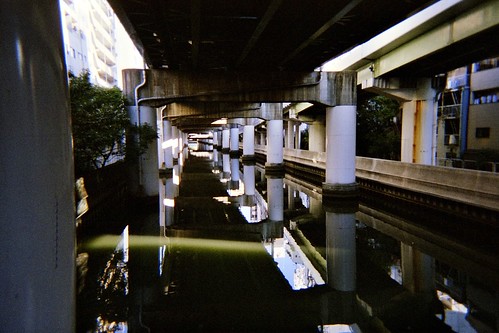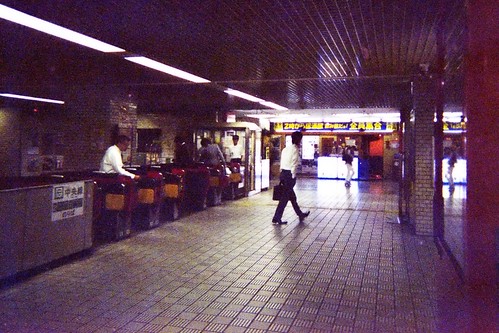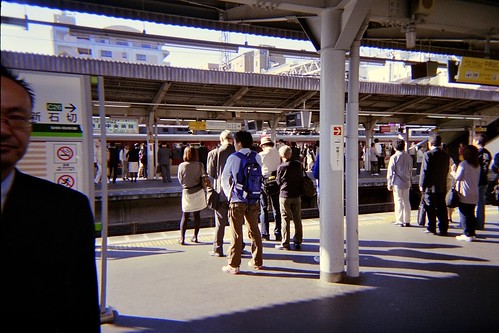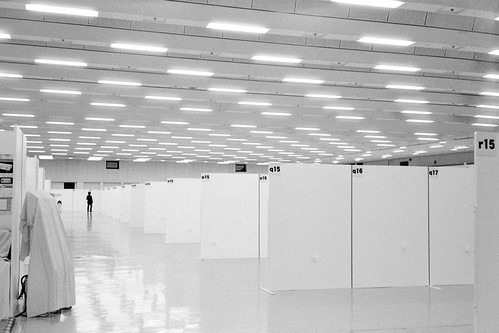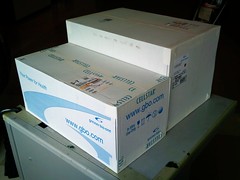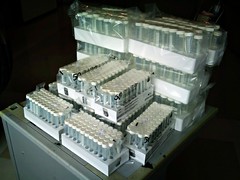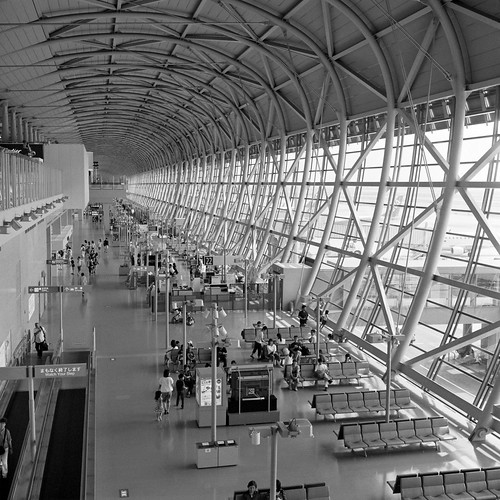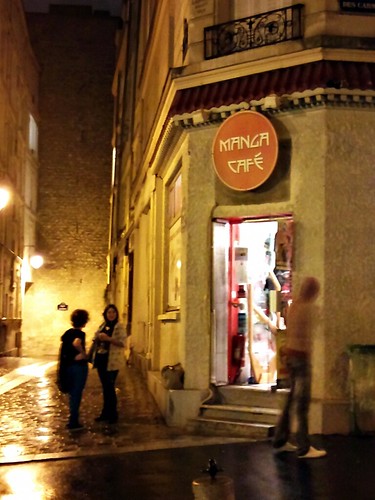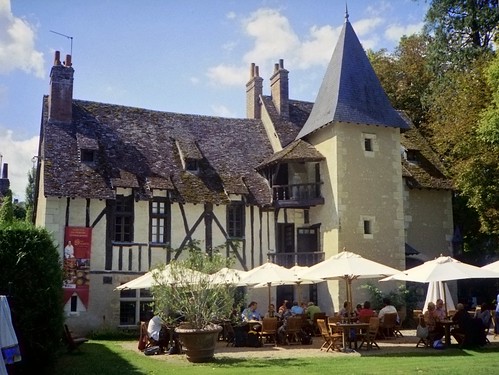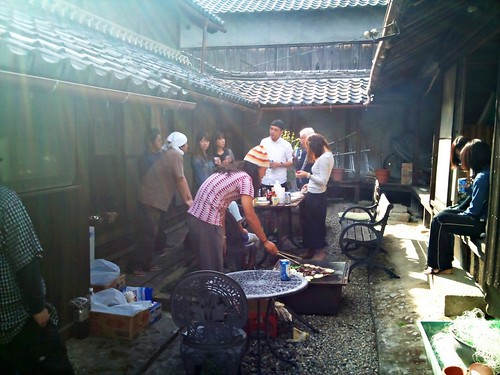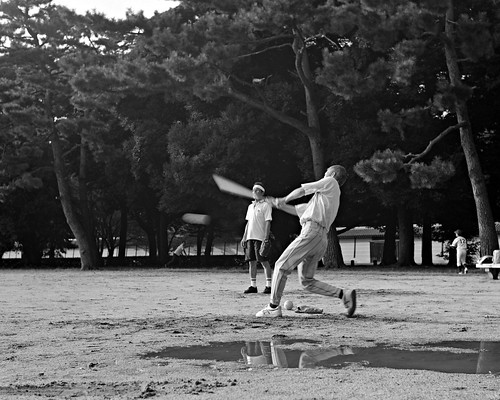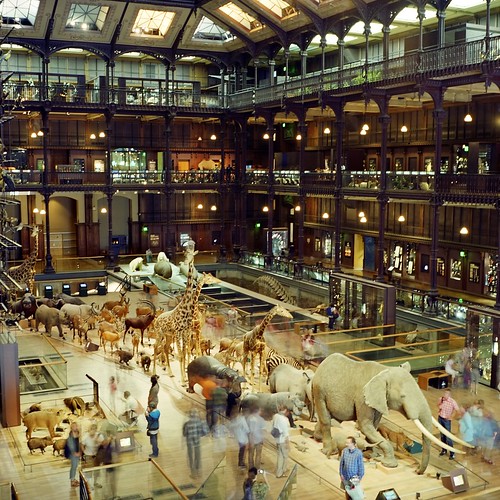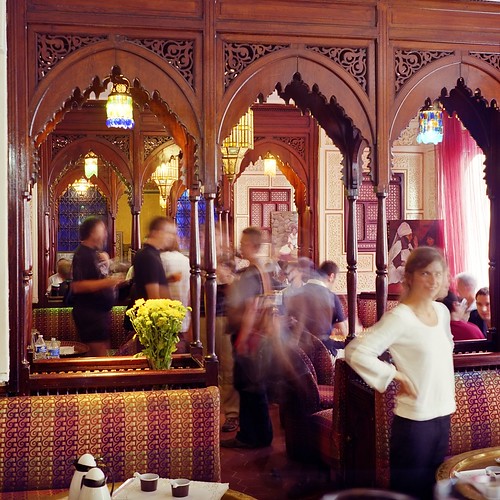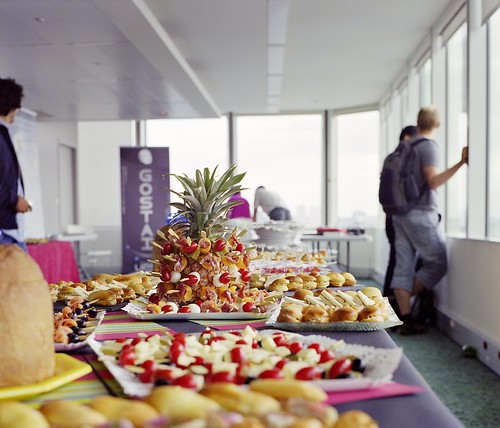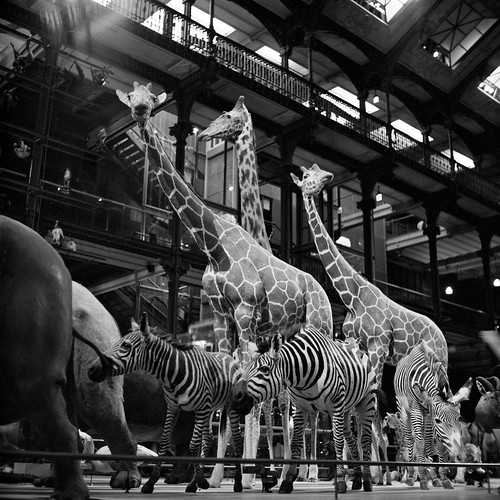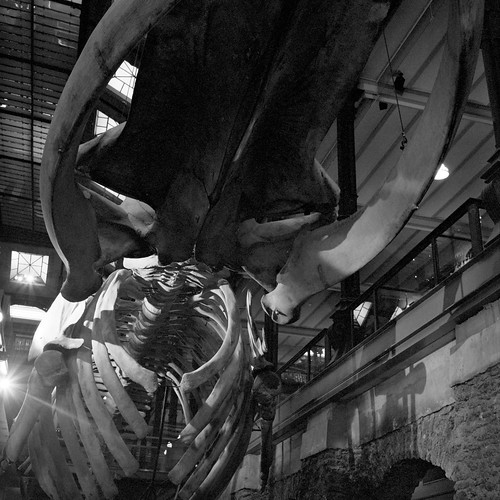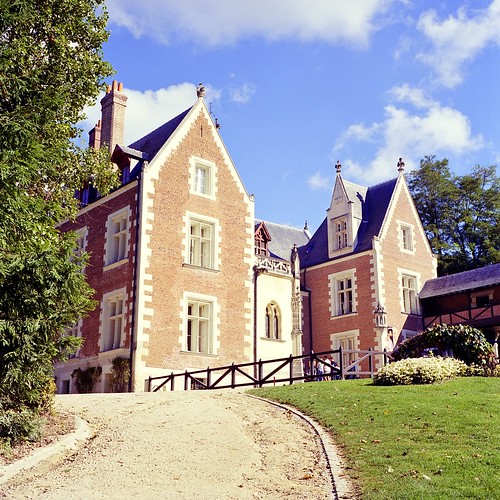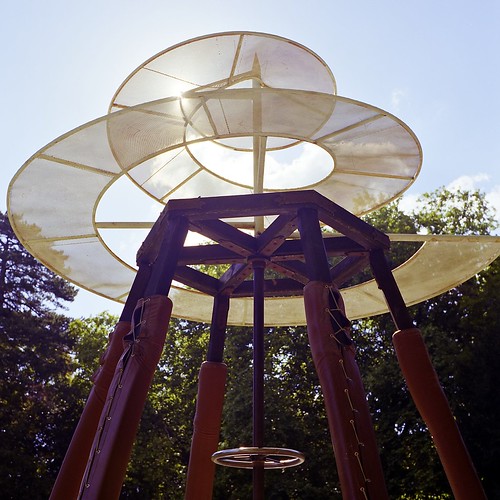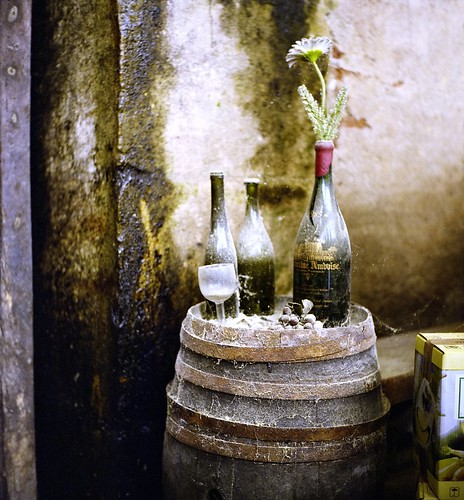The camera stopped by here in Osaka last month. I opened the very light cardboard box to find this:
The Vivitar Mariner. Fifty grams of plasticky 35mm goodness.
The Travelling Camera is a film project so I thought it fitting to take this shot with film too. I used the Pentax 67 with 90mm lens; it doesn't focus very closely so I've had to crop this quite a lot. I really should get a set of extension tubes. The film is Ektar 100, a recent negative film from Kodak with strong colors and very fine grain; the results are akin to slide film, but with much better dynamic range.
Last year I tried a Fuji single-use camera on a day-trip to Kobe. It was simple and dingy but a lot of fun to use. I thought about having a camera just like it but reusable, so you wouldn't have to send it off for development just to change film. The Vivitar Mariner is exactly that camera. I'm not the only one who thinks it's a good idea, apparently, as prices for a used one - a used low-quality 35mm film camera, note - can reach 100 US dollars or more, though more normal prices seem to be around 15-30 Euro.
When I step out on my way to work the morning rush is already underway, and a fair a of office workers are bustling to reach the office early.
The resolution and contrast isn't exactly jumping off the page here. Compare to the medium-format shot above; cameras and lenses, and formats, really do matter a lot.
The complete Mariner has a water-proof enclosure - our one doesn't have it any more - but apart from that this is remarkably similar to the Fuji camera. There's no settable aperture or shutter speeds, and the cheap plastic lens is set at a fixed focus distance of a couple of meters. The body is a very lightweight plastic construction that doesn't exactly inspire confidence but is up to the task of keeping the film in and the light out.
Delivery trucks are still parked at the depot, waiting for the morning shift to get going.
The aperture and speed of the camera is about perfect for open shade like this when used with 400-speed film.
With a 400-speed film you get plenty of light for daylight shots. I would say it's even a little too bright, and if you want to use this on bright summer days you would probably want to try a 100-speed film instead. Of course, it's made for underwater use where the extra light makes sense. There's a flash built-in that takes a 1.5v pen battery, but I didn't try it so I have no idea what the results are like; my guess is that it's not much use beyond a meter or two.
Tosabori canal, Minami Senba, Osaka. On my way to work with just a tiny detour.
The lens is really wide, much wider than the viewfinder. On the positive side it's fun with a real wide-angle. Less positive is the distortion; the leftmost pillar here should really be straight, not bulging. Of course, the pillar wasn't even visible in the viewfinder. If you insist on decent image quality (and if you are, why are you using this camera?) you should probably crop to the viewfinder to avoid the worst distortions.
Using it is simple. You wind the film, open the front hatch and press the shutter. The film counter is only approximate, and the whole mechanism feels creaky and wobbly, but it works. The stated focal length is 28mm, but I wonder if that isn't a bit of a white lie. The finder may be 28mm, but the shot you get on film is a lot wider than what the finder was showing you. Really - I wouldn't be surprised if the focal length is closer to 21mm or something like that. A wider lens would make sense for underwater use of course. Forget using the viewfinder for precise composition, and you can stop worrying about not getting everything in your shot; even if you didn't even see it in the finder, chances are you still got it on film.
Sakaisuji Honmachi station, Osaka.
This kind of light really is at or beyond the outer limit for this camera. It's mostly amazing that I got anything at all; at f/9 and 1/125 shutter speed the light here is about five to six stops too low.
With a lens this wide, and with absolutely no controls to set, you can use this camera completely unattended. Just point it vaguely in the general direction of the stuff you want to shoot, and you'll get it. Give it to a child and they'll be bound to more or less get what they wanted, and if it breaks it's cheap enough that it's no real loss.
The train stops at Ishikiri station on the way to Kita Ikoma. This station always strikes me as a sunny, cheerful place for some reason. Should get off one day and take a look at the area.
You can see all the rest of the pictures from my morning commute in this set

